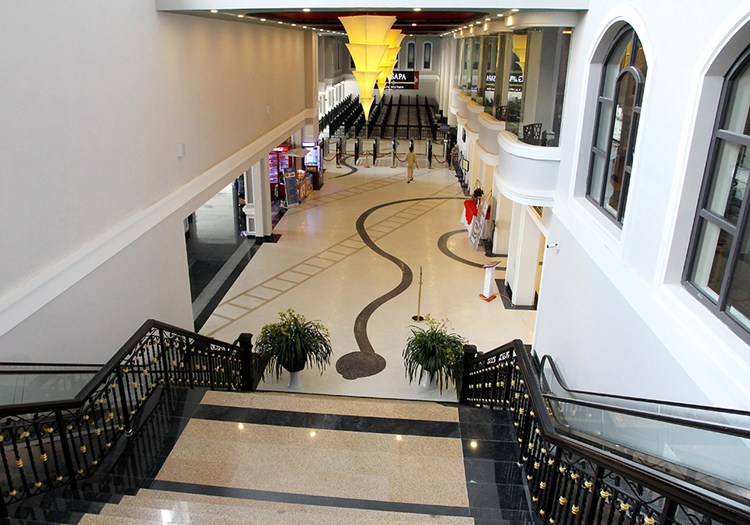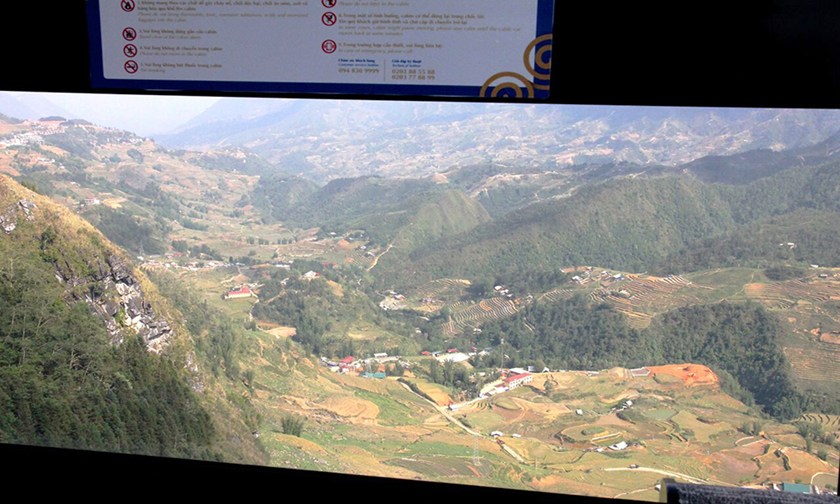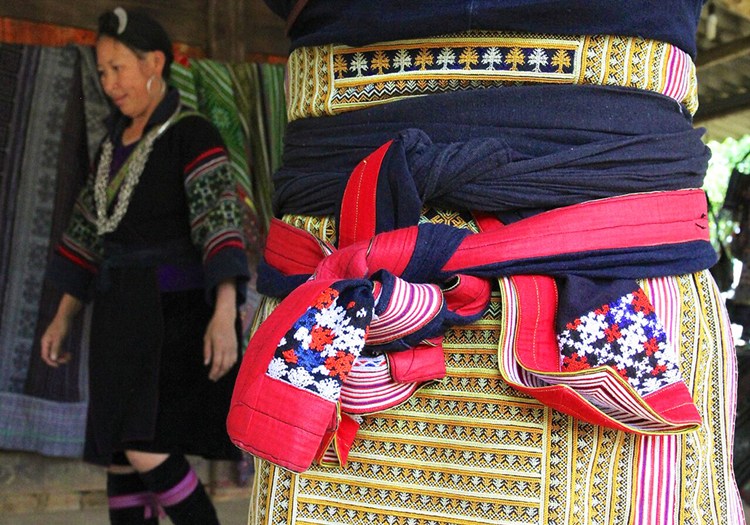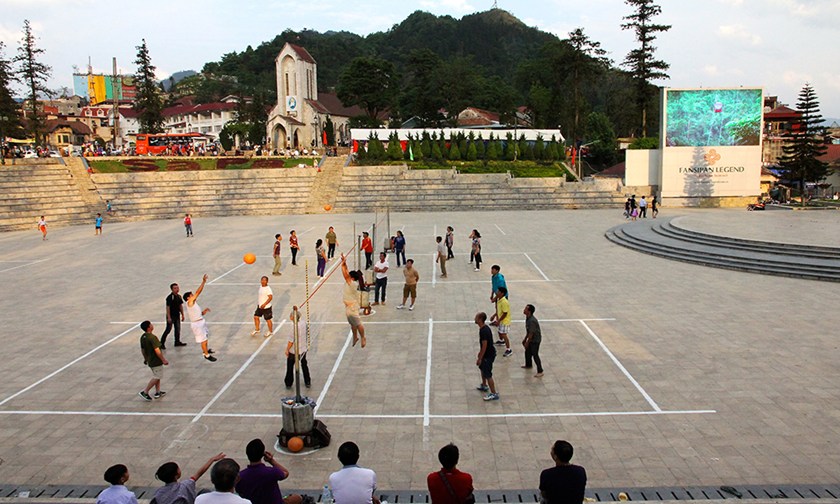SAPA, VIETNAM - All I knew was that the cable car was now running. I did not plan to take it, let alone imagine that it might prove the highlight of my trip. My guidebook scorned the venture, saying it would relay more people in an hour to the top of Vietnam’s highest point, Mount Fansipan, than the number of climbers who summit it in an entire year. With the cable car, the guidebook said, “the appeal of standing alone on a remote peak” would no longer be an option.
“You should go,” said a young Vietnamese trekker named Quan, whom I met in Hanoi, the Vietnamese capital. He and a friend had just returned from climbing the mountain. It took them two days, and when they reached the top they felt so tired they took the rig down.
“We loved it,” Quan said.
The cable car begins near Sapa, a northern hilltop village famous for colourful hand-embroidered clothing worn daily by almost all the local women. I bought a bus ticket north. For three days, I visited hill-tribe villages, learning about the differences between the Red Zao, the Black H’mong, and other local groups. Nobody I met mentioned the cable car. An electronic billboard in Sapa’s main square showed it among other attractions, but otherwise I saw no promotion of any kind — no brochures, no posters, no maps, no talking it up at the travel office. When I inquired at the hotel reception, the clerk told me the ascent took 15 minutes and cost $35 (Cdn), which sounded expensive since my large hotel room was costing $24 a night.
“Shall I call a taxi?” the clerk asked.
“Why not?” I said, deciding to take a chance.
The driver started up a rough, narrow road past rice paddies, banana trees, farmhouses and sheer rock faces. After 20 minutes, we emerged over a rise into another world. Instead of rocks and trees, flat pavement stretched in all directions to form a vast, pristine parking lot, almost totally empty. To our left, a multi-storied terminal clung to the slope, like a spaceport in a science-fiction movie.
Only later did I make sense of what I was seeing. It turned out that the cable car, “Fansipan Legend,” forms the centrepiece of a much larger projected development meant to convert Sapa into one of Southeast Asia’s foremost tourism destinations. In 2014, an expressway north from Hanoi was completed to within 36 kilometres of Sapa. In February 2016, the cable car opened. Construction continues on nearby 5-star hotels, posh restaurants, golf courses and a shopping mall, and work is to begin soon on an international airport.
I had preceded the rush. The vast terminal building stood nearly empty. I bought a ticket at a bank of counters with no lineup. I walked through spacious corridors with enormous ceilings, took an escalator down to a deserted restaurant floor, and then descended a second escalator to a hollow-sounding hall built to manage hundreds of people. I walked through vacant crowd-control pens into an immense concrete chamber with a carpeted floor. A cable car swung toward me, the door slid open automatically, and a moment later I was launched over the Muong Hoa Valley.


Left: The gondola reception hall is a modern facility. Right: The views from the gondola are breathtaking.
An American of Vietnamese heritage from Chicago later told me that, for him, the valley was the worst part. “Crazy scary,” he said. “The ground just dropped away.”
But I enjoyed the sensation. I drifted alone in a gondola built for 35 people, my solitary bubble, over a landscape of vegetable gardens and terraced rice paddies. Only after crossing the valley did I start to get nervous.
From start to finish, the cable car travels more than six kilometres, and over that distance climbs nearly one and a half kilometres, a Guinness World Record for elevation climbed by a cable car. I expected only to cross the valley, but the car began to rise in stages from one tower to the next, over successively higher ridges. The landscape turned jagged and plunged steeply away.
A wind came up and the car started swaying. I reached my arms across the seat back and dug my fingernails into the upholstery. I wished this were an IMAX movie. I wanted off. “If I make it,” I thought, “I’ll walk down, even if it takes me two days.”
Somehow the final segment proved easier and I relaxed my grip, disembarking in the reception cave giddy with relief and excitement.
The air turned misty and chilly. I was wearing a thin short-sleeved shirt and all the attendants wore jackets, some with tightly drawn hoods. “Stairs this way,” one man said, directing me outside to a giant staircase of more than 600 steps leading to Fansipan Peak, altitude 3,143 metres.


Left: The people of Sapa continue to live a traditional lifetstyle. Right: Always time for a game of volleyball.
I started up. Soon I was passing others, mostly Vietnamese tourists in their twenties and thirties. At the summit, I felt energized and reheated, even with a wind blowing, and I joined a small throng of maybe 20 people — not 2,000 — snapping pictures of each other and waving Vietnamese flags. Everybody got a turn. Just below us hung a bank of clouds, giving us a view of jagged ridges poking through mist.
The ride down felt gentle. Again, I got a gondola to myself, and I stood at the front window to immerse myself in the view. It was the most fun I had in Vietnam, and the next day I went back and did it again.
Information
The best way to get to Vietnam from Canada is with Air Canada or Cathay Pacific via Hong Kong. / Tour East Holidays offers a number of exciting and inexpensive tours to Vietnam, some of which include stops in Sapa. For more information, go to
www.toureast.com
About the Author
As the Toronto Star’s world-music reporter, John Goddard travelled frequently to Africa to hear singers everywhere from Khartoum to Timbuku. Afterward, he started wandering closer to home. By foot and subway, he reached all of Toronto’s small heritage museums and wrote the book Inside the Museums: Toronto’s Heritage Sites and Their Most Prized Objects. He then rode the intercity GO bus to write the companion volume, Inside Hamilton’s Museums. Both local and foreign destinations continue to draw him. As a longtime Asia Pacific Foundation of Canada Media Fellow, he recently resolved to delve deeper into the delights of Southeast Asia.